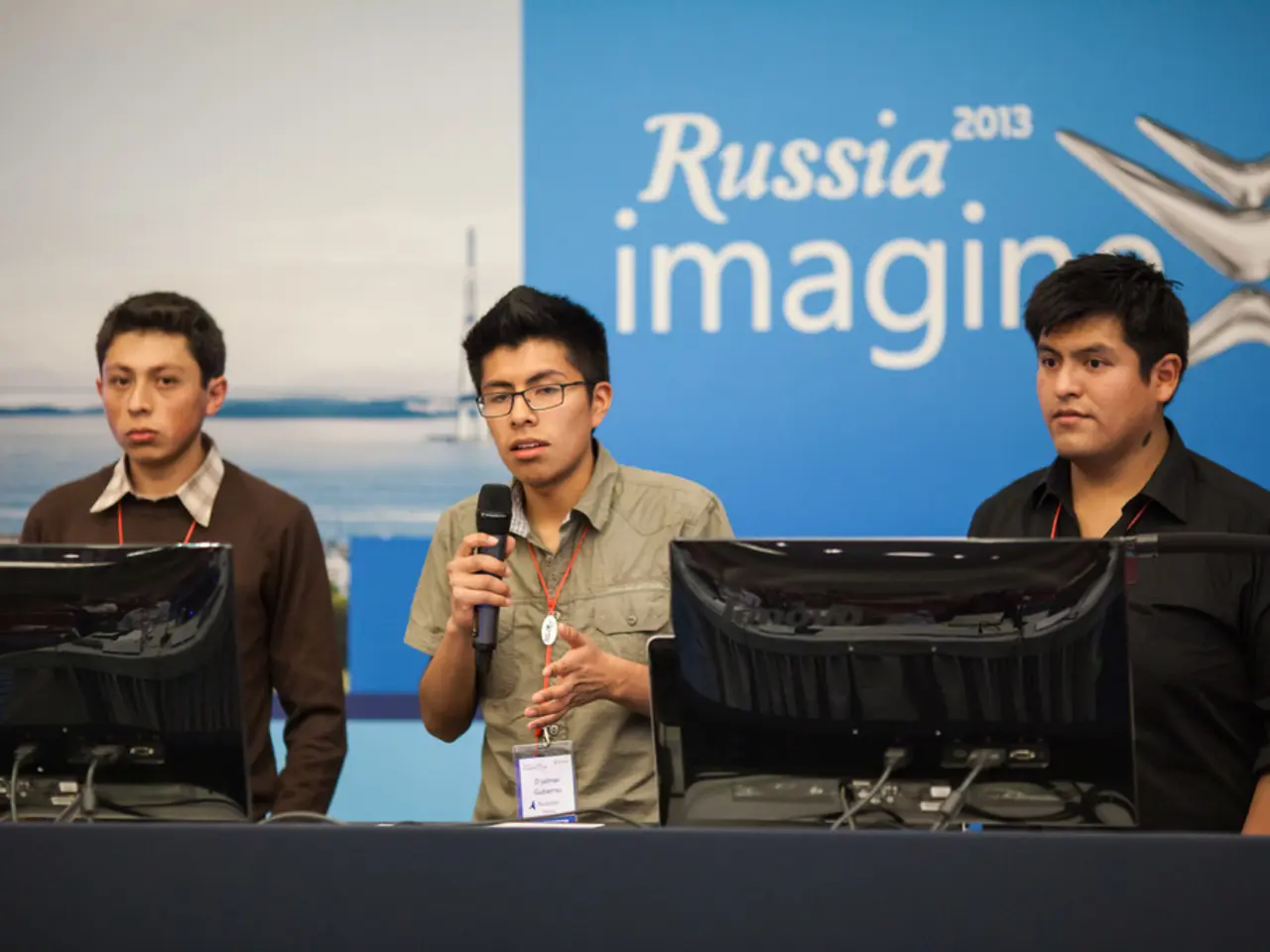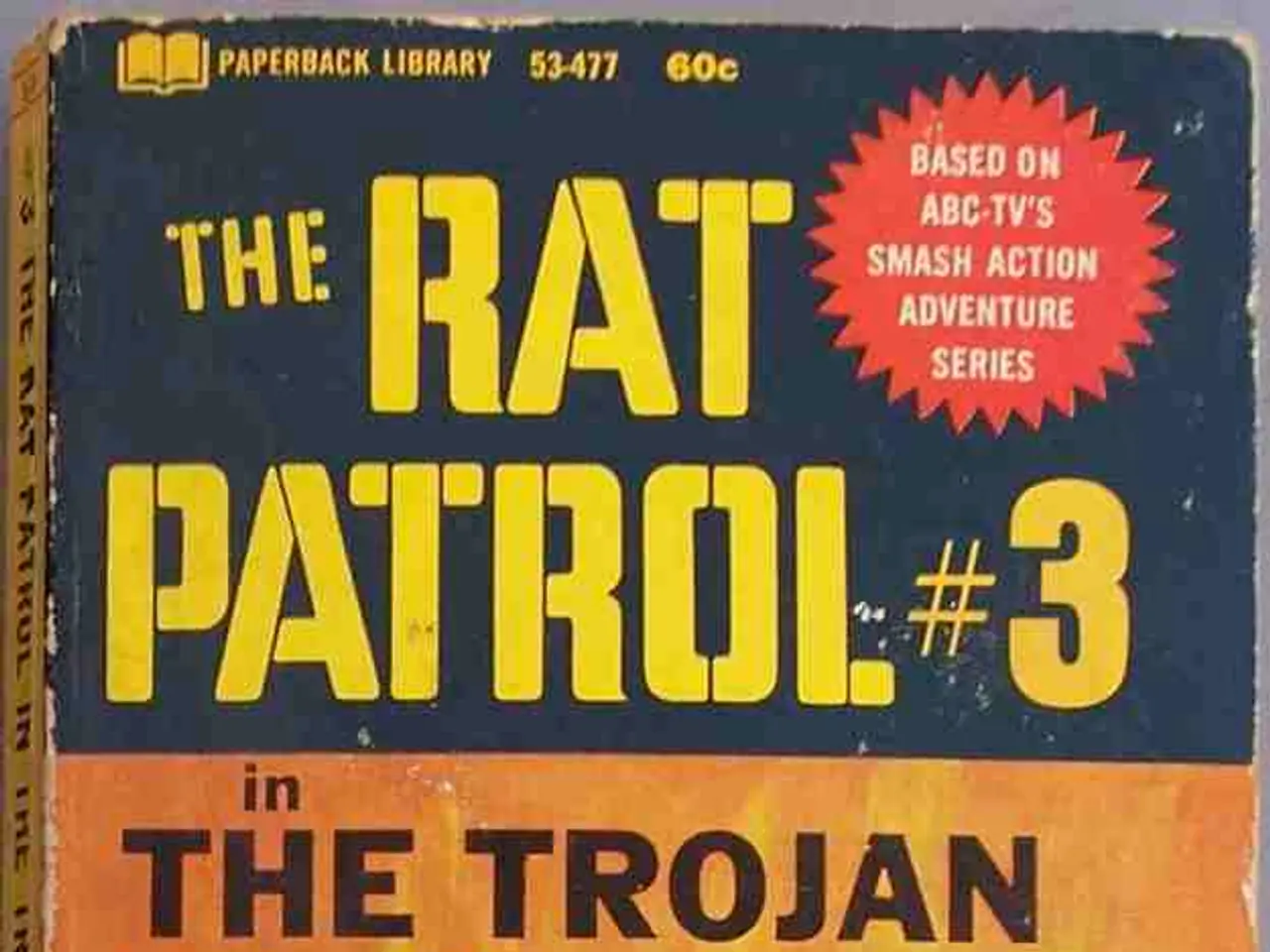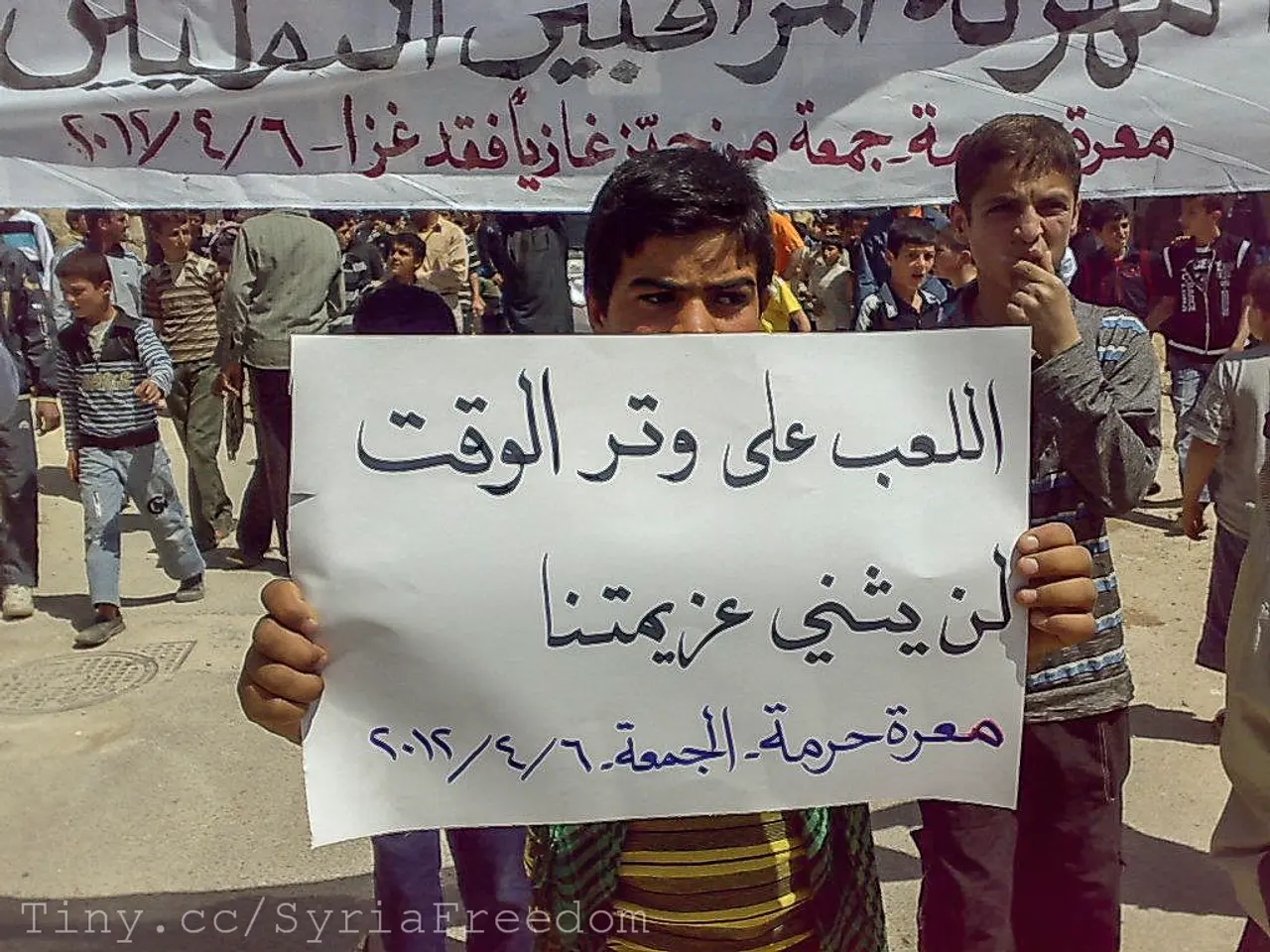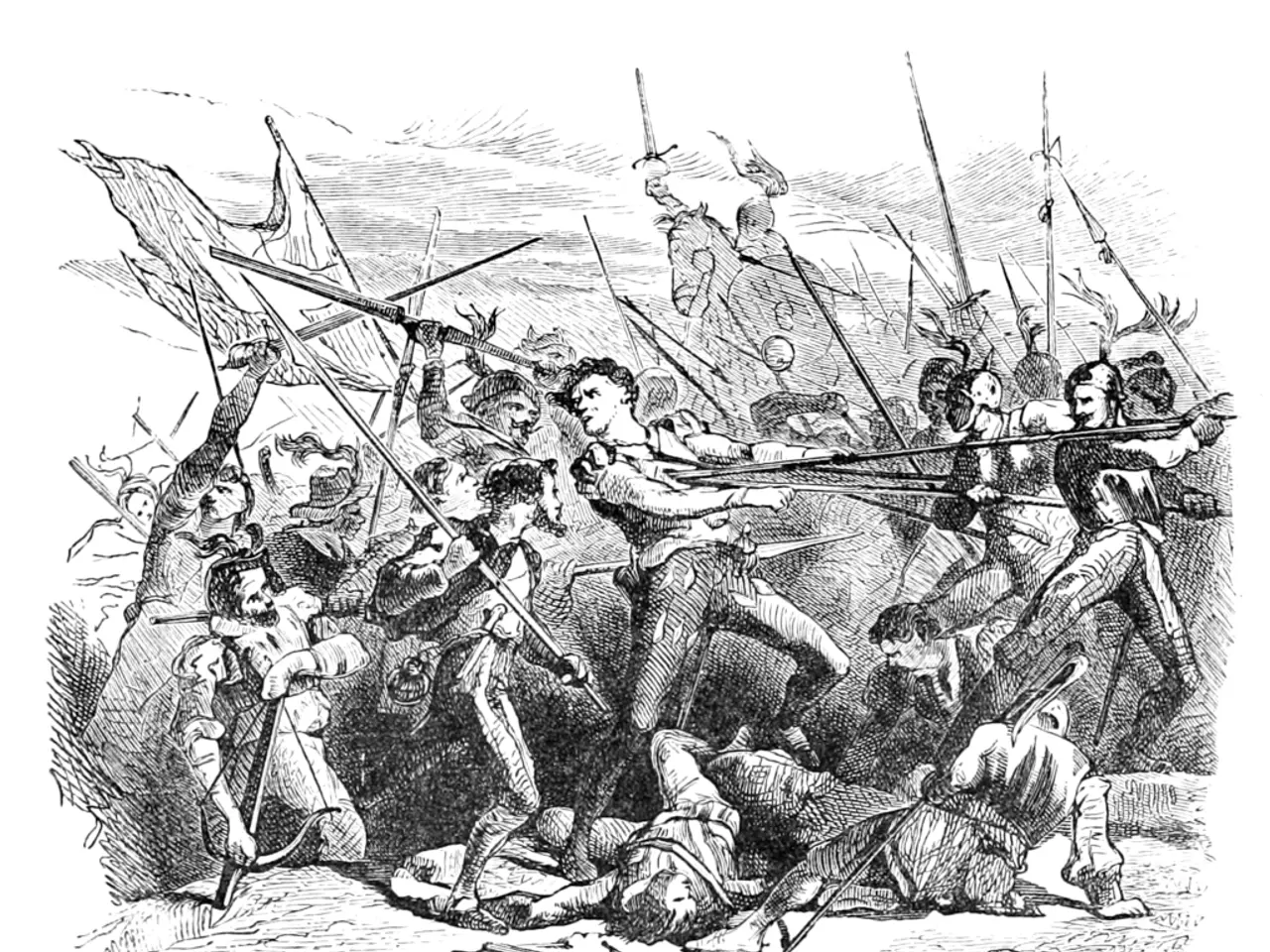Trump's Suggested Strategies for Ukraine to Victory in the Conflict and Russia's Financial Retribution
In the wake of Russia's perceived defeat in Ukraine, concerns about potential aggression from China towards Taiwan and increased assertiveness from North Korea have surfaced. Amidst this geopolitical landscape, a policy proposal has emerged, framed as a true America First policy, to seize frozen Russian assets and use them to fund Ukraine's defense.
The argument is twofold: first, it is a means to safeguard Americans, their jobs, security, and wallets by ending the war with Russia, with the implication that the former President Trump can make Russia pay for the war. Second, it is a way to provide immediate funding to Ukraine, bridging the years it could take for a formal reparations claims commission to issue a ruling.
The U.S. and its allies currently have approximately $300 billion (€255 billion) of frozen sovereign Russian assets at their disposal, with around €210 billion held in the European Union. A key strategy in this proposal is the creation of a "reparation loan" for Ukraine. Instead of outright confiscation, which faces significant legal challenges, these assets would be lent to Ukraine now, with the condition that Russia only gets its money back if and when it pays reparations for war damages.
This approach aligns with the UN General Assembly's call for Russia to pay reparations and reflects international legal consensus that Russia is obliged to cover damages caused by its aggression. The reparation loan provides immediate funding to Ukraine, avoids the political and legal pitfalls of outright confiscation, and acts as a form of economic pressure on Russia, signaling that its aggression has concrete financial consequences.
The proposal also includes encouraging Canada and the EU to seize and use frozen Russian assets, expanding energy exports to replace Russian supplies, sanctioning countries buying Russian oil and gas, and keeping American troops home and taxpayers off the hook.
It's important to note that the U.S. has already frozen significant Russian assets and implemented broad sanctions targeting Russia's financial sector and energy exports. While some propose outright confiscation of assets, experts warn this could harden Moscow’s stance, diminish chances for negotiated settlement, and prolong the conflict.
The U.S. Congress has introduced legislation to give the President authority to confiscate Russian assets, but faces a delicate balance between applying pressure and avoiding escalation. The most feasible and constructive method to use frozen Russian assets, according to this proposal, is to create a legally grounded reparation loan that funds Ukraine’s defense and reconstruction efforts, holding Russia financially accountable in the long term while addressing Ukraine’s immediate needs.
This approach harmonises diplomatic, legal, and economic goals and can help sustain Ukraine’s resistance until peace can be negotiated. The 1994 Budapest Memorandum, in which Ukraine relinquished the world's third-largest nuclear arsenal in exchange for security guarantees from the U.S., U.K., and Russia, is brought up as a reason for America's continued support of Ukraine. The invasion of Ukraine has resulted in an estimated $552 billion in theft and damage to Ukraine's economy and infrastructure, and over 1 million Russian soldiers have been either killed or wounded due to Ukraine's resistance, significantly weakening Russia's military forces.
- The policy proposal under discussion, framed as a true America First policy, envisions the use of frozen Russian assets to fund Ukraine's defense, aligning with the UN General Assembly's call for Russia to pay reparations.
- This proposal suggests creating a reparation loan for Ukraine instead of outright confiscation of frozen Russian assets, which faces legal challenges, and signals Russia that its aggression has financial consequences.
- To further strengthen this approach, the proposal encourages Canada and the EU to seize and use frozen Russian assets, expands energy exports to replace Russian supplies, and sanctions countries buying Russian oil and gas.
- In light of the delicate balance between applying pressure and avoiding escalation, the most feasible and constructive method to use frozen Russian assets, as per this proposal, is to create a legally grounded reparation loan that helps Ukraine sustain its resistance and addresses its immediate needs, while holding Russia financially accountable in the long term.








